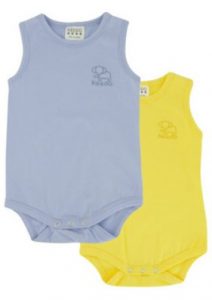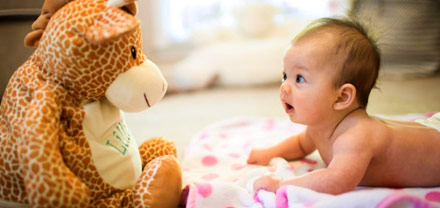Baby
Oral hygiene for babies and toddlers
The future is now. The way children care for their bodies today will have an impact on their health as adults.
Even before the first tooth appears, parents should begin cleansing the mouth. Gently wipe the teeth, gums, cheeks, hard palate, and tongue for the removal of residual milk or food. Whether baby is fed by breast or bottle, mother should wipe the gum pads and new teeth, under the tongue and inside the cheeks, after every feeding with a clean washcloth, cotton swab or cotton wool ball. Mothers who breast feed on demand should do this frequently. This way you not only bind bacteria but you also massage gently the gums of your child. You can start doing this already during the first month after delivery.
Placing a baby in bed with a bottle of milk or juice increases the risk of Baby Bottle Syndrome. Rampant decay is the primary characteristic found in Baby Bottle Syndrome. Examine the teeth closely for decay. Consult your dentist or a pediatric dentist about any concerns. If you must give any drink at all when the baby is put to bed, a bottle of water is advised.
As soon as the first tooth appears, begin using a tooth brush to clean the tooth after eating. Don’t cover the brush with toothpaste. Young children tend to swallow most of the toothpaste, and swallowing too much fluoridated toothpaste can cause permanent spots on their teeth called dental fluorosis. Bristles should be soft and rounded to prevent harming baby’s tender gums and tooth enamel.
– It is not recommended to use fluoridated toothpaste until the age of 18 months. An infant has a strong sucking reflex and will only swallow the toothpaste. After 18 months a small pea-sized amount of toothpaste can be applied to a child’s soft toothbrush.
– Flossing can be done when the first and second molars erupt, between the ages of 12 and 24 months. The molars are usually the only teeth that are in contact with one another. Many flossing devices that can assist in performing this procedure are available.
– Oral hygiene can be done once a day until your child begins solids. At that time, twice a day is recommended. Plaque will begin to form as soon as the first tooth appears. Plaque is a thin film of bacteria, which constantly forms on all teeth. By brushing the teeth regularly the formation of caries can be prevented.
Find brushing your child’s teeth awkward? Try having your child lie down. Put your child on your lap or on the floor, keeping his/her head steady with your legs. If your child is standing, have his/her back to you with their head tilted slightly and resting against your body. Have them hold a mirror while you brush and floss their teeth so your child can see what is being done. At the beginning the technique is not that important. It is more important to get the child used to cleaning their teeth regularly and carefully.
Baby teeth will begin to be replaced by permanent teeth from around age six. It is very important to take good care of these first teeth. Therefore, dental hygiene right from the beginning is very important to keep your child’s permanent teeth healthy. Young children do not have the manual dexterity to brush properly. Your child will need your supervision and help brushing until he or she is 8-10 years old to ensure a thorough brushing has been done.
Brush your child’s teeth at least twice a day – in the morning and just before bed. After lunch you should at least remove food leftovers from the teeth and clean teeth after every sugary snack. If you have to miss a brushing, the bedtime one is probably the worst one to miss. If you don’t get rid of the bacteria and sugar that cause cavities, they have all night to do harm. While you are awake, saliva helps keep the mouth clean. When you are asleep, there is less saliva produced to clean the mouth. For this reason it is important to brush before bedtime.
A baby’s first tooth is one milestone that should lead to another – their first dental check-up. While most parents make baby’s first visit to the paediatrician priority, many do not realize how early a visit to the dentist should take place. A child should typically see a dentist some time between the first tooth erupting and their first birthday. It’s the ideal time to introduce the child to the dentist and get them used to seeing him/her on a regular basis. It is important because it gives the dentist and hygienist a chance to see the teeth before decay sets in. Surprisingly, if you wait until 2 or 3 years of age, there may already be some decay.
In addition to vigilant home care, a child should get a professional cleaning every 6 months along with their exam and a fluoride treatment.
When it comes to taking a child for their first visit to the dentist, how a parent handles the visit can make or break how the child will view oral care throughout their life. With the help of books, videos and a positive attitude, a parent can set the foundation for future happy and healthy visits to the dentist!
Please contact me for further information
Or visit our website www.mam-baby.co.za

Babies 2-Pack Skyway Grow Vests
Buy here from Keedo

What's new in next-level Babycare & Pregnancy...
Never miss a thing

hello@babyonline.co.za • +27 (0)81 885 4683 ![]()
![]()
![]()
*Important : The information provided is for information purposes only. No medical diagnosis or prescription can be inferred or is implied. Please consult your doctor for medical advice.